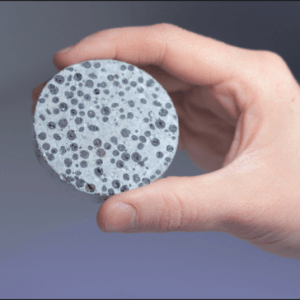3 Concrete Innovations That Could Change The Construction Industry Forever
Published on August 13, 2018 by Brenda Forton

Concrete throughout history has literally and figuratively become the building blocks of civilization as we know it. Just a few ingredients combined and formed into bricks and other shapes, dried in the sun or ovens have formed the foundation and support of structures for centuries. We depend on its strength and durability to protect us from outside elements and find safety within the sturdiness of the structures we inhabit. Here are a few new innovations that will take concrete to new heights.
- Martian Concrete — Quite literally the building material of the future! Researchers at the Northwestern University, have created concrete made from the materials available on Mars.
This new concrete does not require water which is a crucial benefit in the development of structures on the planet. Martian concrete can be made by heating Sulphur at 240 degrees Celsius which will melt it into a liquid. Martian soil is then added as an aggregate and once the mixture is cooled, becomes concrete! Northwestern Universities research team has determined the ratio of Sulphur and Martian soil needs to be 1:1. - Fire Resistant Concrete — Traditional concrete tends to chip and flake when exposed to fire, just the same as firewood crackles. The water that is trapped inside vaporizes when heated and builds pressure which causes it to break down. Researchers have found that adding polypropylene (PP) fiber to the mix creates a network of canals for water vapor to escape. Such canals are created as the fibers melt away, thus reducing the pressure build up. While the addition of PP fibers to self-compacting concrete seems to solve the fire retardance issue, it also posed a threat to the concretes ability to self-compact. Researchers found that soaking a super absorbing polymer (SAP) in water beforehand caused the fibers to swell. When the concrete sets, the water is drawn out of the SAP through the porous cement matrix which then causes the SAP to shrink, leaving behind hollow spaces inside. These spaces link up with the other hollow spaces left behind by the few melted PP fibers that were in the mix, again creating a network of canals that enable it to withstand the heat. Sources: EMPA NEW ATLAS
- Self-Healing Concrete — Concrete provides the foundations for our homes, bridges, and It's the most common construction material worldwide. It's ingredients consist of water, cement, and aggregate.
Scientists have found another ingredient that when added to the mix, makes concrete self-healing – Bacteria. While Bacteria is often considered to be a bad thing, this bacteria can actually heal the cracks in concrete. When a crack forms, water has a way of seeping into the void and over time makes it larger with expansion and contraction. With the addition of these bacterial spores, the water seeps into the crack and the spores go to work germinating, and moving toward the source of the water. The bacteria produce calcite which acts as a bio-cement which fills the cracks as the bacteria move. This process is known as Biomineralization. Biomineralization is a sophisticated process and a widespread phenomenon in nature leading to the formation of a variety of inorganic minerals by living organisms [19]. From: Modern Inorganic Synthetic Chemistry, 2011
